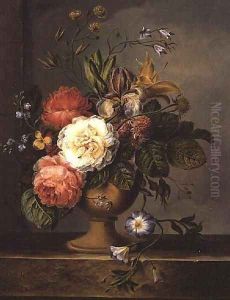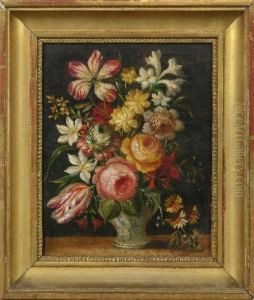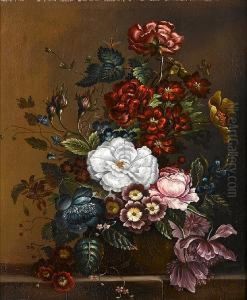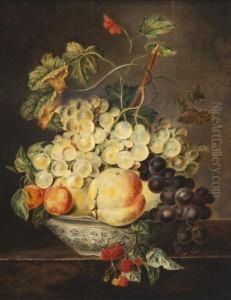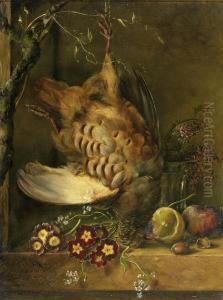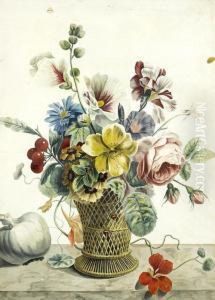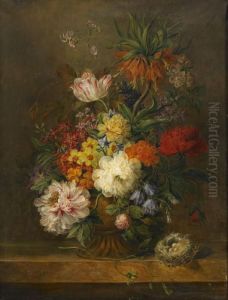Petronella van Woensel Paintings
Petronella van Woensel was a Dutch painter born into an artistic family in the late 18th century. Her father, Pieter van Woensel, was a well-known physician, travel writer, and artist. Growing up in such an environment, she was exposed to art and culture from an early age. Not much is documented about her early life and training, but it is known that she was active in the art world during the late 18th and early 19th centuries, a time when female artists were not commonly recognized or encouraged.
Petronella specialized in creating miniature portraits, a popular art form in the 18th and early 19th centuries, which involved painting small, detailed portraits usually meant for personal keepsakes or mementos. These were often worn as jewelry or kept in small cases, reflecting the sentimental values of the period. Her works were known for their fine detail and the personal touch she brought to her subjects. She also painted larger portraits, still lifes, and genre scenes, demonstrating a versatile range as an artist.
In addition to her work as a painter, van Woensel was also a member of the Drawing Society in The Hague, which indicates that she was somewhat integrated into the Dutch art community of her time. However, like many women artists of the period, her work was often overshadowed by her male contemporaries, and as a result, her contributions to art history were not as widely recognized during her lifetime or thereafter.
Petronella van Woensel's works are a part of Dutch cultural heritage and provide insight into the role and recognition of women artists during the early modern period. Her death in 1839 marked the end of a career that, while not extensively documented, adds to the rich tapestry of Dutch art history. Her paintings, where they can be found, serve as a testament to her skill and the artistic currents of her time.
